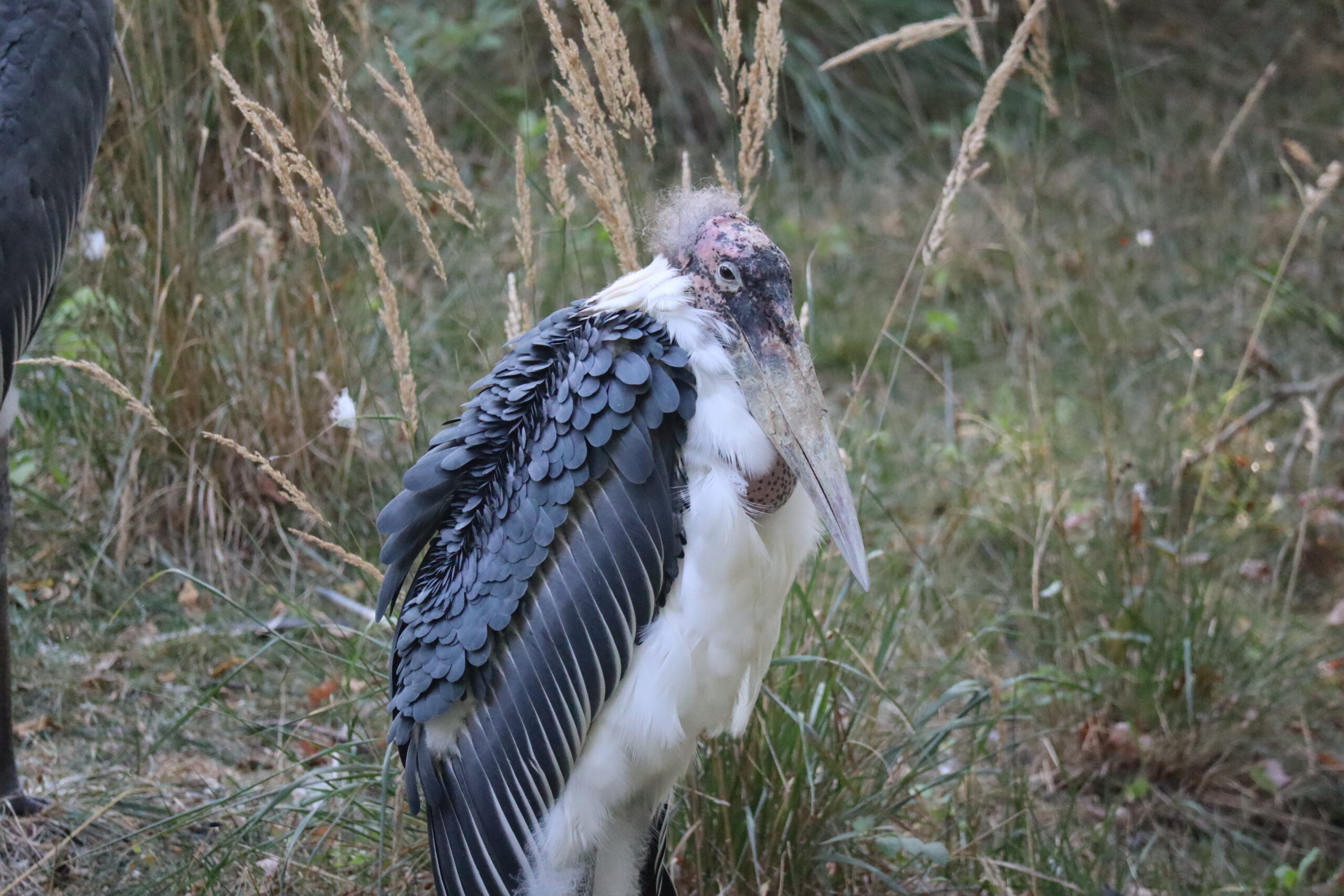I LIVE IN AFRICA
Marabou storks live in Africa, from the Sahara desert to South Africa. They live in the savannas and open areas, but will also live close to human habitation.
I AM A SCAVENGER
These storks will eat carrion (dead animals), fish, reptiles, insects, birds, frogs, and rodents. These birds also eat food scraps around homes and farms near African towns.
MARABOU STORKS ARE SOCIAL
Marabou storks often gather in groups near lakes or rivers. These social birds are also known to hang around large mammals, including human beings. They are generally very quiet creatures, but may occasionally make grunts, croaks, or rattling from their bills.
BALD AND BEAUTIFUL
The marabou stork has no feathers on its neck and head which allows it to stay clean when eating messy foods. This adaptation is also extremely important in preventing infection from their food-of-choice.
HELPING THE MARABOU STORK IN THE WILD
The marabou storks at the Fort Wayne Children’s Zoo are enrolled in the Species Survival Plan (SSP). SSP is a program implemented by the Association of Zoos and Aquariums (AZA) to help ensure a genetically viable population exists.
I AM IMPORTANT TO MY ECOSYSTEM
Marabou storks are known as scavengers, meaning they feed mainly on carrion and animal scraps. Although this may seem a little gross, it is extremely beneficial for the environment in that animal carcasses are removed from the environment and the spread of pathogens and bacteria is halted.

